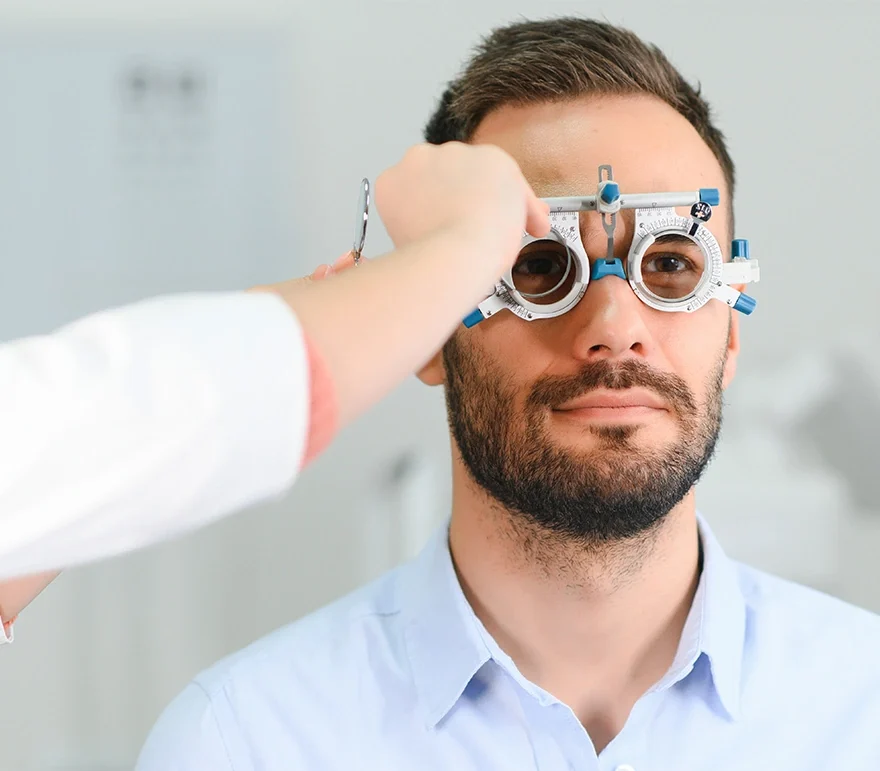
Refractive Errors
Clear vision depends on the cornea and the lens being able to properly focus light rays on the retina. The retina lines the back wall of the eye. It receives the picture formed by the light rays and sends the image to the brain through the optic nerve. This process produces sight.
This is very similar to the way a camera takes a picture. The cornea and lens in your eye act as the camera lens. The retina is similar to the film. If the image is not focused properly, the retina or film receives a blurry image. This condition in the human eye is known as a refractive error, because light rays are not refracting – or focusing – properly.

What are the causes and symptoms of Refractive Errors?
The most common symptom of a Refractive Error is blurry vision – either up-close, far away or both. There are four types of Refractive Errors: Nearsightedness, Farsightedness, Astigmatism, and Presbyopia. Each is caused by differences in the length and shape of the cornea, which results in blurry vision.
Nearsightedness, Farsightedness and Astigmatism are typically inherited. Presbyopia happens as the eye ages, typically over the age of 40.
Farsightedness (Hyperopia)
People who are farsighted can see distant objects clearly, but close-up objects are blurry. This condition is a result of an eye that is too short or a cornea that lacks the necessary refractive power to focus images on the retina. This condition is inherited as well. If you are farsighted, images focus on a point beyond the retina. This unfocused image captured by the retina is then sent to the brain and processed as an unclear picture. Approximately 25% of adult Americans are farsighted, although incidence increases with age. About half of all people over 65 have this condition.
Astigmatism (Distorted vision)
Astigmatism causes blurry vision when looking at objects that are close, such as reading a letter, and objects that are far away, such as reading a road sign. Vision with astigmatism may not be equally blurry; some distances are more out of focus than others.
A normal cornea is round with even curves from side to side and top to bottom. If you have astigmatism, your cornea is shaped more like the back of a spoon, curved more in one direction than in another. This causes light rays to have more than one focal point and focus on two separate areas of the retina, distorting the visual image. Two-thirds of Americans who are nearsighted also have astigmatism.
Presbyopia (Aging eyes)
When you are young, the lens in your eye is soft and flexible. The lens of the eye changes its shape easily, allowing you to focus on objects both close and far away. After the age of 40, the lens becomes more rigid. Because the lens can not change shape as easily as it once did, it is more difficult to read at close range. This perfectly normal condition is called presbyopia. You can also have presbyopia in combination with nearsightedness, farsightedness or astigmatism.

How are Refractive Errors corrected?
Eyeglasses, contact lenses and laser vision correction surgery, are effective in correcting all of these conditions. However, presbyopia remains a challenge and its treatment still represents a compromise.
Contact us
Contact us today to learn more about refractive errors.
The doctors at Cincinnati Eye Institute have either authored or reviewed the content on this site.




















































































